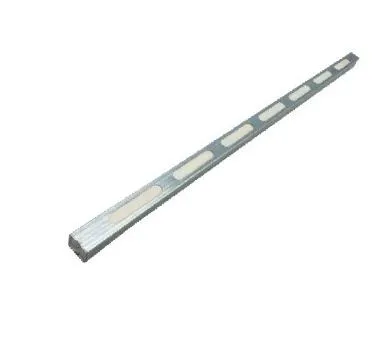
Timber, Steel, and Concrete: The Building Blocks of Modern Construction
In construction, the debate often revolves around the merits of various materials like timber, steel, and concrete. Each material offers unique advantages, and when combined, they create versatile and durable structures. Let’s dive into the specifics of timber post to steel beam connection, evaluate whether steel frame is better than timber, and explore the applications of steel and timber supply in construction.

Timber Post to Steel Beam Connection: Strength Meets Versatility
The timber post to steel beam connection is a cornerstone of hybrid construction, combining the natural resilience of timber with the unparalleled strength of steel. These connections play a vital role in modern architecture, offering both functionality and aesthetic appeal.
Key Advantages
- Structural Stability: Steel beams provide unmatched support, ensuring the timber posts remain securely in place.
- Design Flexibility: These connections allow architects to achieve unique designs by blending materials.
- Ease of Installation: Prefabricated connectors simplify the assembly process, saving time and labor costs.
Applications
- Residential buildings with exposed beams for a rustic yet modern look.
- Industrial spaces requiring a strong yet adaptable structure.
- Open-concept designs where aesthetics and strength are equally important.
Timber post to steel beam connections form the backbone of hybrid designs, balancing strength and style effortlessly.
Is Steel Frame Better than Timber? Let’s Settle the Debate
The age-old question of whether a steel frame is better than timber doesn’t have a one-size-fits-all answer. It all depends on the project requirements and the priorities of the builder.
Steel Frame: Pros and Cons
Pros:
- Durability: Steel is resistant to termites, moisture, and fire, making it highly durable.
- Strength: Perfect for high-rise buildings and structures requiring heavy load-bearing capacity.
- Eco-Friendly: Recyclable and sustainable when sourced responsibly.
Cons:
- Cost: Steel frames are generally more expensive than timber.
- Thermal Conductivity: Steel can transfer heat, requiring additional insulation in some climates.
Timber Frame: Pros and Cons
Pros:
- Natural Insulator: Timber offers better thermal performance, keeping homes energy-efficient.
- Aesthetic Appeal: It adds warmth and character to any design.
- Ease of Use: Lightweight and easy to work with, especially for smaller projects.
Cons:
- Vulnerability: Susceptible to pests and environmental damage without proper treatment.
- Maintenance: Requires periodic care to maintain its strength and appearance.
Choosing between steel and timber ultimately depends on the project’s needs, but combining the two can offer the best of both worlds.
Steel and Timber Supply: Building the Future
Reliable steel and timber supply is crucial for any construction project. With demand for hybrid construction on the rise, suppliers are stepping up to provide high-quality materials that meet diverse building requirements.
What to Look for in a Supplier
- Variety: Ensure the supplier offers multiple grades and types of steel and timber for different applications.
- Quality Assurance: Materials should meet safety and durability standards.
- Sustainability: Eco-friendly sourcing is essential for modern construction practices.
Applications of Steel and Timber Supply
- Commercial Projects: Offices and retail spaces that require robust and visually appealing designs.
- Residential Construction: Durable and stylish materials for homes.
- Infrastructure: Bridges and public facilities that benefit from the combined strength of steel and timber.
Reliable steel and timber supply ensures that projects are completed on time and to the highest standard.
Timber, Steel, and Concrete: A Perfect Trio
While timber and steel dominate hybrid construction, concrete plays an equally important role. Together, these materials create structures that are strong, durable, and visually stunning.
Why Combine Timber, Steel, and Concrete?
- Enhanced Load Capacity: Concrete adds mass and stability, complementing the flexibility of timber and steel.
- Improved Durability: Steel resists corrosion, timber provides insulation, and concrete stands strong under compression.
- Architectural Freedom: The combination allows for innovative designs that are both functional and artistic.
Real-World Examples
- Skyscrapers with concrete cores, steel frames, and timber accents.
- Bridges where concrete foundations support timber decks and steel arches.
- Eco-friendly homes featuring timber interiors, steel supports, and concrete bases.
When used together, timber, steel, and concrete redefine modern construction with their unparalleled synergy.
Ready to elevate your next project with a combination of timber, steel, and concrete? Our range of high-quality materials and connectors ensures you can create durable, stylish, and sustainable structures. Browse our website today to explore our products and bring your architectural vision to life!
-
Stainless Steel Keel: Analysis of the Triple Advantages of Rigidity, Stability, and LightweightNewsJun.19,2025
-
New Building Scaffolding System: Technological Innovation and Application Prospects of ScaffoldingNewsJun.19,2025
-
Double Diameter 48 Round Pipe Construction Method Using Light Steel Keel Knife Instead of Traditional Reinforcement ApplicationNewsJun.19,2025
-
Bar Tie Reinforcement: Quality Assurance and Reinforcement Efficiency EnhancementNewsJun.19,2025
-
Application of Square Column Reinforcement in Wall and Top StructureNewsJun.19,2025
-
Activo Scaffolding: Effective Development Practice Based on Reasonable Template Design and Supporting System ConfigurationNewsJun.19,2025
-
Optimizing Structures with Square Column ReinforcementNewsJun.10,2025










